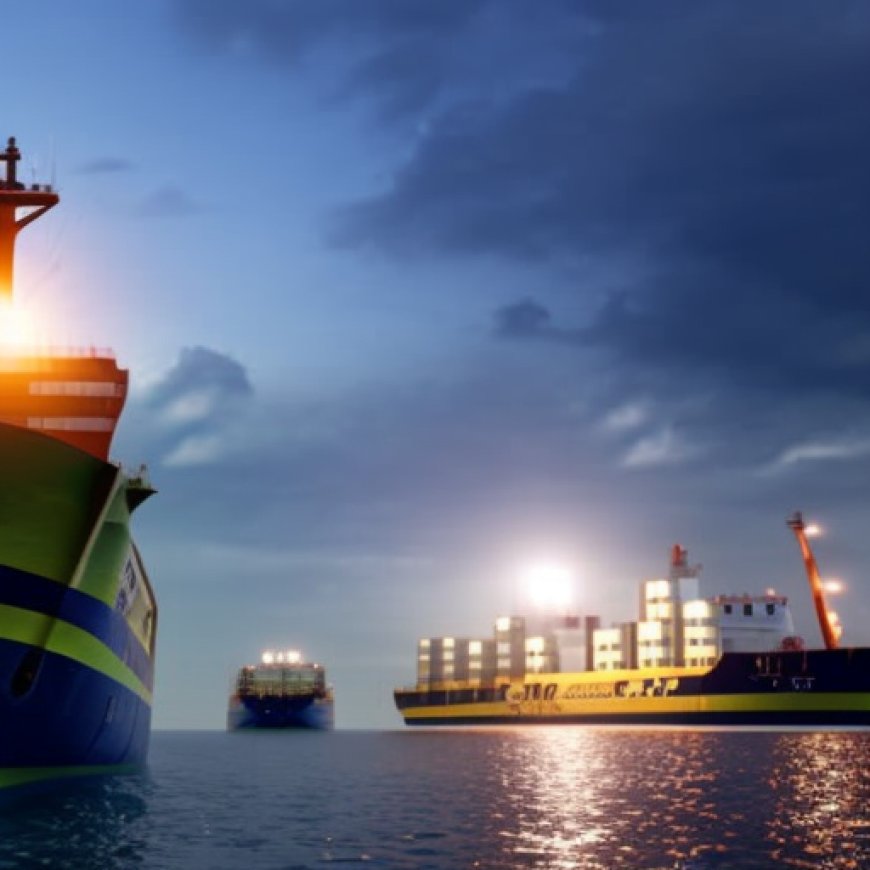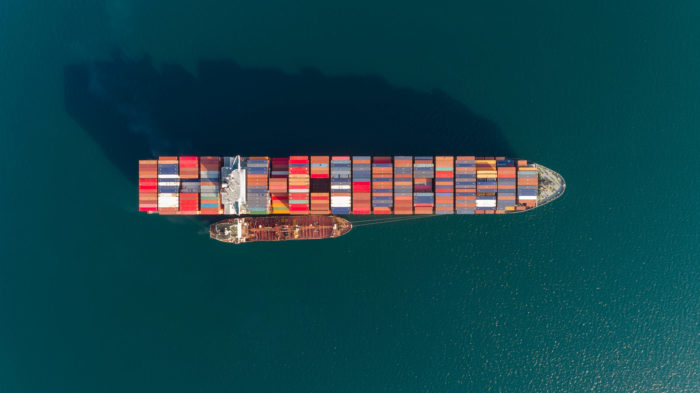SOHAR Port to use biofuel bunkering in tugboat operations


SOHAR Port Implements Biofuel Bunkering for Tugboat Operations

Introduction
SOHAR Port has become one of the first ports in the Middle East to adopt biofuel bunkering in tugboat operations, marking a significant step towards sustainability and emissions reduction in the maritime industry.
Biofuel Bunkering Implementation
In a pioneering move, SOHAR Port has successfully completed a trial using B20 biofuel (a mixture of 80% diesel and 20% biofuel) for the Tug Sohar. Following the successful trial, the use of biofuel will be extended to all tugboats at the port. Furthermore, SOHAR Port plans to expand the project to include locomotives by next month.
Sustainable Development Goals (SDGs)
The implementation of biofuel bunkering aligns with several Sustainable Development Goals (SDGs), including:
- SDG 7: Affordable and Clean Energy
- SDG 9: Industry, Innovation, and Infrastructure
- SDG 13: Climate Action
- SDG 14: Life Below Water
- SDG 15: Life on Land
Environmental Impact and Benefits
The CEO of SOHAR Port, Emile Hoogsteden, emphasizes the environmental benefits of implementing biofuel in marine operations. By reducing greenhouse gas emissions from fuel consumption in tugboat operations, SOHAR Port aims to significantly decrease its overall emissions and support Oman’s wider environmental vision towards achieving net zero emissions. This landmark moment sets new environmental standards for the region and beyond.
“Working with SOHAR Port for the first biofuel bunker supply in Oman is a significant move toward emissions reduction and sustainability in the maritime industry. While marine gas oil remains necessary in the short term, gradually increasing biofuel usage will lead to substantial greenhouse gas emissions savings. This transition aligns with global efforts to combat climate change and demonstrates a commitment to a cleaner, more sustainable future in shipping.”
The CEO of Hormuz Marine, Sulaiman Alhadhrami, highlights the contribution of biofuel bunkering towards decreasing greenhouse gas emissions. The company aims to achieve an initial target of 17% reduction in emissions, in line with Oman’s commitment to reach net zero emissions by 2050. Biofuel, derived from organic materials such as used cooking oil, is an eco-friendly alternative to traditional fossil fuels. When burned, it reduces greenhouse gas emissions.
Circular Economy and Sustainable Development
The biofuel bunkering project is part of SOHAR Port and Freezone’s mission to accelerate the transition to a circular economy and promote economic development in Oman. The conservation of natural resources is a fundamental goal of sustainable development, aligning with Oman Vision 2040’s objective to achieve sustainable development and foster economic competitiveness.
SDGs, Targets, and Indicators Analysis
1. Which SDGs are addressed or connected to the issues highlighted in the article?
- SDG 7: Affordable and Clean Energy
- SDG 9: Industry, Innovation, and Infrastructure
- SDG 13: Climate Action
- SDG 14: Life Below Water
- SDG 15: Life on Land
The article discusses the use of biofuel bunkering in tugboat operations at SOHAR Port. This aligns with the goals of SDG 7, which aims to ensure access to affordable, reliable, sustainable, and modern energy for all. The use of biofuel contributes to reducing greenhouse gas emissions and promoting cleaner energy sources.
Furthermore, the adoption of biofuel bunkering also relates to SDG 9, which focuses on building resilient infrastructure, promoting inclusive and sustainable industrialization, and fostering innovation. The implementation of biofuel in marine operations demonstrates innovation and the adoption of sustainable practices in the maritime industry.
Additionally, the article mentions that the use of biofuel contributes to decreasing greenhouse gas emissions towards Oman’s commitment to reach net zero by 2050. This connects to SDG 13, which targets urgent action to combat climate change and its impacts.
Moreover, the article highlights the importance of conserving natural resources and achieving sustainable development, which are goals of SDG 14 (Life Below Water) and SDG 15 (Life on Land). The use of biofuel as a renewable energy source helps reduce the negative impacts on marine and terrestrial ecosystems.
2. What specific targets under those SDGs can be identified based on the article’s content?
- SDG 7.2: Increase substantially the share of renewable energy in the global energy mix
- SDG 9.4: Upgrade infrastructure and retrofit industries to make them sustainable
- SDG 13.2: Integrate climate change measures into national policies, strategies, and planning
- SDG 14.2: Sustainably manage and protect marine and coastal ecosystems
- SDG 15.2: Promote the implementation of sustainable management of all types of forests
Based on the article’s content, the specific targets that can be identified are as follows:
– SDG 7.2: The use of biofuel bunkering contributes to increasing the share of renewable energy in the global energy mix.
– SDG 9.4: The adoption of biofuel bunkering represents an upgrade in infrastructure and a sustainable practice in the maritime industry.
– SDG 13.2: The implementation of biofuel bunkering aligns with integrating climate change measures into national policies and strategies.
– SDG 14.2: The use of biofuel helps sustainably manage and protect marine ecosystems.
– SDG 15.2: The adoption of biofuel contributes to promoting sustainable management of forests and reducing the negative impacts on terrestrial ecosystems.
3. Are there any indicators mentioned or implied in the article that can be used to measure progress towards the identified targets?
Yes, there are indicators mentioned or implied in the article that can be used to measure progress towards the identified targets. These indicators include:
– Share of renewable energy in the energy mix: The increase in the use of biofuel bunkering can be measured to determine the share of renewable energy in the maritime industry’s energy consumption.
– Number of infrastructure upgrades and retrofits: The adoption of biofuel bunkering represents an infrastructure upgrade, and the number of such upgrades can be measured to assess progress towards the target.
– Integration of climate change measures in policies and strategies: The inclusion of biofuel bunkering in national policies and strategies can be measured to determine the level of integration of climate change measures.
– Conservation and protection of marine and coastal ecosystems: The reduction in greenhouse gas emissions from marine operations through biofuel bunkering can be an indicator of progress in sustaining marine and coastal ecosystems.
– Sustainable management of forests: The use of biofuel sourced from organic materials, primarily plant matter, contributes to sustainable forest management, and the volume of biofuel usage can be measured as an indicator.
4. Table: SDGs, Targets, and Indicators
| SDGs | Targets | Indicators |
|---|---|---|
| SDG 7: Affordable and Clean Energy | 7.2: Increase substantially the share of renewable energy in the global energy mix | – Share of biofuel bunkering in the maritime industry’s energy consumption |
| SDG 9: Industry, Innovation, and Infrastructure | 9.4: Upgrade infrastructure and retrofit industries to make them sustainable | – Number of infrastructure upgrades and retrofits related to biofuel bunkering |
| SDG 13: Climate Action | 13.2: Integrate climate change measures into national policies, strategies, and planning | – Inclusion of biofuel bunkering in national policies and strategies |
| SDG 14: Life Below Water | 14.2: Sustainably manage and protect marine and coastal ecosystems | – Reduction in greenhouse gas emissions from marine operations through biofuel bunkering |
| SDG 15: Life on Land | 15.2: Promote the implementation of sustainable management of all types of forests | – Volume of biofuel usage sourced from organic materials, primarily plant matter |
Copyright: Dive into this article, curated with care by SDG Investors Inc. Our advanced AI technology searches through vast amounts of data to spotlight how we are all moving forward with the Sustainable Development Goals. While we own the rights to this content, we invite you to share it to help spread knowledge and spark action on the SDGs.
Fuente: safety4sea.com

Join us, as fellow seekers of change, on a transformative journey at https://sdgtalks.ai/welcome, where you can become a member and actively contribute to shaping a brighter future.







